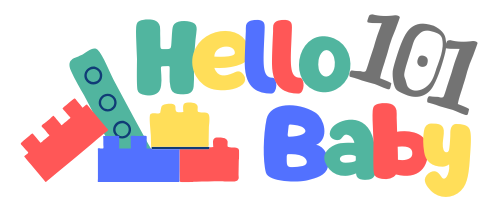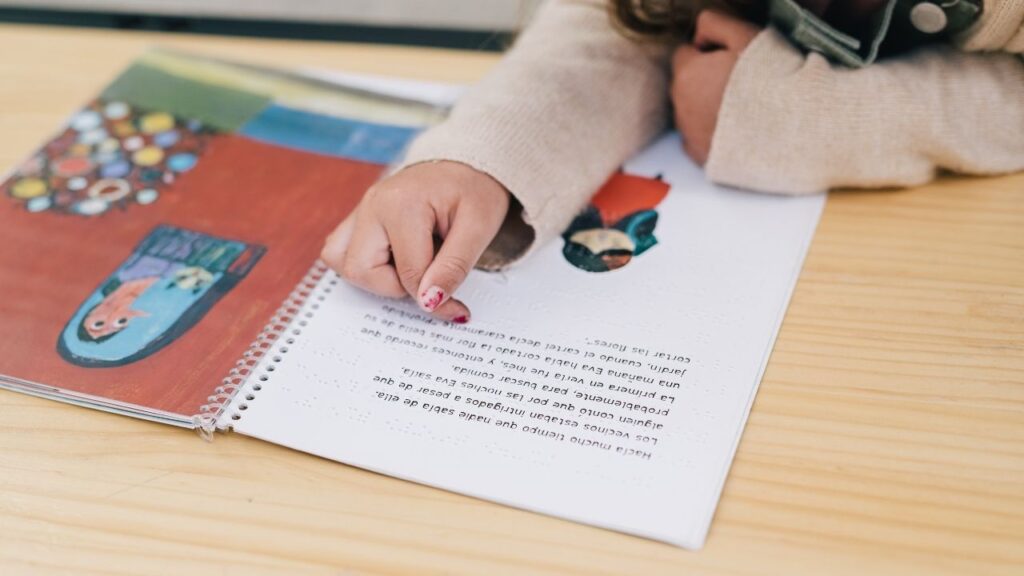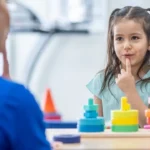You may think raising bilingual childrens at home is hard, especially if you are not fluent. Many parents feel the same way.
You might worry your child will get mixed up or not do well. But small steps can help a lot. Studies show that bilingual kids often have:
- Better problem solving skills and stronger memory
- More empathy and can adjust to others easily
- Slower mental decline when they grow up
You do not need to be perfect. Stay positive and use both languages every day. Every little bit helps!
Key Takeaways
- Start using both languages early. Use them often to help your child learn. This helps your child reach language milestones on time.
- Make language learning fun every day. Read, tell stories, play games, and sing songs. This keeps your child interested and confident.
- Use daily routines to practice both languages. Do this even in small ways. Name objects or sing songs in both languages.
- Involve family, friends, and community groups. This gives your child more chances to speak. It helps your child feel proud of their heritage.
- Stay consistent and positive. Set clear language goals. Celebrate small wins to support your child’s bilingual journey.
Start Early
Early Exposure
You might wonder if starting early really matters when raising a bilingual child. The answer is yes! When you introduce two languages from the start, your child gets used to hearing and using both.
Babies and toddlers soak up sounds and words like little sponges. They do not get confused by hearing two languages.
In fact, research shows that bilingual children reach big language milestones like saying their first word or putting two words together at the same ages as kids who only hear one language.
Here are some key findings from studies on early language exposure:
- Bilingual kids hit language milestones (like first words and 50 word vocabularies) at the same time as monolingual kids.
- Their total vocabulary size matches that of monolingual children, so using two languages does not slow them down.
- The more you use each language at home, the faster your child learns vocabulary and grammar in both.
- Children who hear both languages equally tend to develop balanced skills in each.
- Early and steady exposure helps your child combine words and ideas in both languages.
- Timing matters kids who hear more of a language earlier reach milestones in that language sooner.
- These results show that early language experience, not just age, shapes how well your child learns both languages.
Tip: Try to use both languages in daily routines, like meals or playtime. Even short, simple phrases make a difference!
Any Age Works
Maybe you did not start when your child was a baby. That is okay! While early exposure gives your child a head start, you can begin at any age.
Research shows that children who start learning two languages before age three often speak both like native speakers. Kids who start later may not sound exactly like a native, but they can still become strong bilinguals.
If your child is older, you can still help them learn. Use books, music, and games in the new language. Make it part of your family’s daily life.
Children are flexible and can pick up new words and sounds quickly, especially when learning feels fun and natural. The most important thing is to keep going and stay positive. Every bit of exposure helps your child grow as a bilingual speaker!
Reading Routine
Daily Reading
Reading with your child every day really helps them become bilingual. You do not have to read for a long time. Reading out loud for 30 minutes in your home language each morning is enough.
This helps your child get better at language. If you add 30 more minutes for things like workbook pages or reading together, you reach one hour. This fits the goal of giving your child lots of language practice.
Kids who read every day in their heritage language do better in both languages. For example, Spanish-English bilingual kids in the U.S. who read at home in Spanish do as well as kids who speak only one language. Reading every day helps your child use skills from one language in the other.
This makes it easier to learn new words and understand stories. If your child has trouble with reading, practicing often helps them get better over time.
Tip: Try using bilingual books or books in your home language. Let your child choose the story sometimes. This keeps reading fun and helps your child feel part of it.
Storytelling
Storytelling is a great way to help your child learn two languages. You can read storybooks in your home language or tell stories from your childhood.
Telling the same stories again helps your child remember new words and understand the story. Use pictures or objects to make the story more interesting.
Here are some ways to make storytelling work for your family:
- Read the same book many times to help learn words.
- Teach important words in both languages as you read.
- Ask your child to tell the story in their own words.
- Use pictures or drawings to explain new ideas.
- Share stories about your family’s culture and traditions.
When you tell stories together, your child connects with both languages and your culture. Storytelling also helps your child use their imagination, remember things, and feel more confident.
So, pick up a book or start telling a story your child will enjoy it, and you will see their language skills improve!
Make It Fun
Games
You can make learning a language feel like play. Kids enjoy games, so use this to help them learn. When you play together, your child picks up new words and grammar.
They do not even notice they are learning. Try games like “I Spy” or guessing games with yes or no questions. These games help your child practice vocabulary, memory, and spelling.
Here are some fun things you can do at home:
- Play picture games like Zingo! or Spot It! to learn new words and how to say them.
- Use Mad Libs to make silly stories and learn grammar.
- Try word games or Scrabble to grow your child’s vocabulary.
- Make your own bilingual word cards for matching or translation games.
Tip: These games help your child feel more confident and excited. They also help with memory, teamwork, and solving problems.
You can also play games that focus on sounds and reading. For example, try rhyming games or play bingo with words in your target language. These activities make a fun space where your child can try new words without stress.
| Game Type | Example Game | What It Teaches |
|---|---|---|
| Vocabulary Development | Thematic Bingo | New words and sentence use |
| Phonics and Decoding | Syllable Search | Sound patterns and pronunciation |
| Reading Fluency | Dramatic Reading | Oral fluency and comprehension |
Music and Songs
Music helps you remember language. When you sing songs in your target language, your child remembers words and phrases better.
Singing helps with how words sound and how to say them. Simple songs with a catchy tune work best, especially if you add movement or dance.
- Singing together helps your child learn new words and grammar.
- Repeating songs helps your child remember new words.
- Adding actions to music makes learning fun and easy to remember.
- Listening to different music styles teaches your child about the culture.
A study showed that kids who learned songs got better at language, even grammar. Singing also made them want to learn and pay attention. You do not have to sing well. Your child will enjoy singing, moving, and laughing with you.
Note: Use music apps or videos to find songs in your target language. Make singing part of your daily routine for the best results.
Use Media
Books and Apps
You can boost your child’s language skills with the right books and apps. Think of these tools as helpers, not the main way your child learns a language.
Try to pick resources that match your child’s age and interests. Many families find that digital books and story apps make reading more exciting.
For example, the Bilingual Stories Bookshelf App gives you bilingual storybooks in American Sign Language and English. This app lets your child watch, read, and learn in both languages. It also shares stories from different cultures, which helps your child connect with their roots.
Research shows that using e-books and educational media can help your child learn new words and understand stories better. These tools use pictures, sounds, and words together.
This mix helps your child remember what they learn. A recent study found that digital picture books can motivate kids to read more and grow their vocabulary. Some parents worry about using apps, but when you choose quality ones and use them together, your child benefits most.
Tip: Try reading digital books with your child. Talk about the story and ask questions. This makes screen time more meaningful.
TV and Videos
TV shows and videos in your target language can also help your child. Choose programs made for kids, like cartoons or educational shows.
These often use simple words and repeat phrases, which helps your child learn. Watching together lets you pause and talk about what you see. You can ask your child to describe what happened or guess what comes next.
Set a clear limit for screen time. Use TV and videos as a way to support what your child learns from books, games, and daily life. Try to keep screen time active by joining in and talking about the show. This way, your child learns language in a fun and natural way.
| Media Type | How It Helps | Example |
|---|---|---|
| Books/Apps | Builds vocabulary, supports reading | Bilingual story apps |
| TV/Videos | Improves listening, teaches phrases | Kids’ cartoons |
Remember, media works best when you use it with your child, not just for them.
Everyday Practice
Routines
You can use daily routines to teach language. Use both languages at breakfast or bedtime. Your child learns both languages are important.
Research shows kids can keep two languages apart. They do not get mixed up, even if you switch. You can talk about brushing teeth in one language. You can talk about breakfast in another.
Try these easy ways to use both languages:
- Say hello in one language and goodnight in the other.
- Name clothes as you get dressed together.
- Ask about dreams in both languages, like “What did you dream about?” or “¿Qué soñaste?”
- Give instructions in both languages, like “Wash your hands” and “Lávate las manos.”
Tip: Using both languages in routines helps your child learn. Even short talks help your child get better at both languages!
Daily Activities
Everyday things give you many chances to use both languages. Cooking, cleaning, and playing can help your child learn.
You can cook a family recipe and name foods in both languages. When you clean, label things or give directions in both languages. On outings, talk about what you see and ask your child to do the same.
Here are some fun things to try:
- Write grocery lists together, using both languages for each item.
- Sing songs or rhymes while you do chores.
- Play “I Spy” in both languages during car rides.
- Keep a journal of new words you learn each day, and add drawings or photos.
Many families read bilingual books, send text messages, and label things at home. These help kids use both languages every day. You can also give choices in both languages, like “Do you want leche or milk?” This helps your child answer in either language and feel sure of themselves.
Remember, the more you use both languages, the more your child will use them too. Small steps every day lead to big progress!
Support Network
Family and Friends
You do not have to do this by yourself. Family and friends can help your child learn both languages. Ask grandparents, aunts, uncles, or friends to speak your home language with your child.
This gives your child more chances to practice. Real talks help your child use both languages in daily life. It is not just about lessons or books.
Your child may talk more and use new words when family uses both languages. These times help your child feel proud of their heritage. They also build confidence.
The Functional Language Proficiency (FLiP) approach says kids get better at both languages when they use them in real life. Your child learns to switch between languages. They can share stories and connect with relatives. This makes learning languages feel easy and fun.
Tip: Try having regular video calls or family dinners where everyone speaks the home language. Even short talks help your child stay connected and keep learning.
Community Groups
Community groups and language exchanges give your child new chances. These groups let your child meet other kids who speak the same language or want to learn.
When your child joins playgroups, goes to cultural events, or takes part in language exchanges, they use their language skills in real life. This helps your child feel more sure and skilled.
- Community groups are fun places to practice language.
- Your child can make friends who speak the target language. This makes them want to use it more.
- Group games, songs, and storytelling help your child use language better.
- These activities teach your child about different cultures and help them feel proud.
Kids who join these groups feel more at ease talking to people from different backgrounds. They learn to work with others and share ideas.
They also build strong friendships. These social skills last a long time and help your child become a confident bilingual speaker.
Culture and Traditions
Celebrations
Joining in cultural celebrations gives your child a real reason to use their heritage language. When you celebrate holidays or share special meals, your child hears and speaks the language naturally.
Family traditions make these moments special. These events are not just fun. They help your child learn about customs, values, and stories that shape who they are.
If you celebrate a holiday from your family’s country, your child learns words for foods, songs, and greetings. They also see how language connects to feelings and memories. Many bilingual children say these traditions make them feel proud and close to their roots.
Using your heritage language during these times helps your child understand each tradition. It builds a strong sense of belonging.
Tip: Ask your child to help plan or lead a celebration. Let them share what they know about the tradition in both languages. This helps them feel more confident and improves their language skills.
Heritage Activities
You can help your child’s language and cultural identity with simple heritage activities. These activities give your child more chances to use their language and learn about their background.
- Sign your child up for a heritage language school or weekend class.
- Join community groups that celebrate your culture.
- Use language learning apps or watch bilingual story videos together.
- Take part in school programs about different cultures.
- Encourage your child to share family stories or recipes in your home language.
These activities help your child make friends, learn new words, and feel proud of their heritage. When you support both languages and cultures at home, you show your child that both parts of their identity matter. This helps them grow up confident, proud, and ready to connect with people from many backgrounds.
Raising Bilingual Childrens
Consistency
When you start raising bilingual childrens, consistency matters more than perfection. You do not have to speak both languages perfectly. What counts is showing up every day and giving your child regular chances to hear and use both languages.
Experts say that steady exposure and practice help your child’s brain grow stronger and more flexible. For example, some families use the “one parent, one language” method. One parent always speaks one language, and the other uses the second language. This clear pattern helps your child know when to use each language.
You might wonder if switching between languages will confuse your child. Research shows that children can keep languages separate, especially when you use them in regular routines.
Try using one language at breakfast and another at bedtime. You can also pick certain days for each language. The key is to stick with your plan as much as possible. Over time, your child will feel comfortable moving between both languages.
Tip: Celebrate small wins! If your child says a new word or tells a story in either language, cheer them on. Your encouragement keeps them motivated.
Language Goals
Setting clear goals helps you stay on track when raising bilingual childrens. Start by thinking about what you want your child to achieve.
Do you want them to speak with family members?
Read books in both languages?
Write simple stories?
Make your goals realistic and match your child’s age and interests.
Here are some ways to set and track language goals:
- Make a list of words or phrases you want your child to learn each week.
- Use a chart or stickers to track progress. Kids love seeing their achievements!
- Label items around your home in both languages.
- Read bilingual books together and talk about the story.
- Play games that use both languages, like memory or matching games.
Many parents worry about speech delays when raising bilingual childrens. You might hear that learning two languages at once can slow your child down. This is a myth. Studies show that bilingual children reach language milestones just like other kids.
Mixing languages, or “code mixing,” is normal and shows your child is learning how to use both languages. If you ever feel unsure, talk to a bilingual speech language pathologist for support.
Remember, raising bilingual childrens takes patience and time. Stay positive, keep your goals clear, and enjoy the journey together!
Raising bilingual childrens at home needs patience and steady work. You can do it! Celebrate every small win with your child. Try to keep routines fun and interesting.
Research shows bilingualism helps your child’s brain grow strong. It also helps protect their brain as they get older. Stay positive and use both languages every day. Kids learn best when language is part of real life. If you have problems, you are not alone. Share your story or ask questions below. Your journey can help inspire others!
FAQ
What if I am not fluent in the second language?
You do not need to be perfect. Use what you know. Learn new words with your child. Watch shows, listen to music, or read together. Your effort matters most!
Will my child get confused by two languages?
No, your child will not get confused. Kids can separate languages easily. Mixing words is normal and shows your child is learning. Just keep using both languages every day.
How much time should I spend on each language?
Aim for regular, daily exposure. Even 15–30 minutes a day helps. Try reading, singing, or playing games in both languages. Small, steady steps work best.
What if my child refuses to speak one language?
Stay patient. Make the language fun with games, songs, or stories. Praise any effort. Invite family or friends to join in. Your child will feel more comfortable over time.



